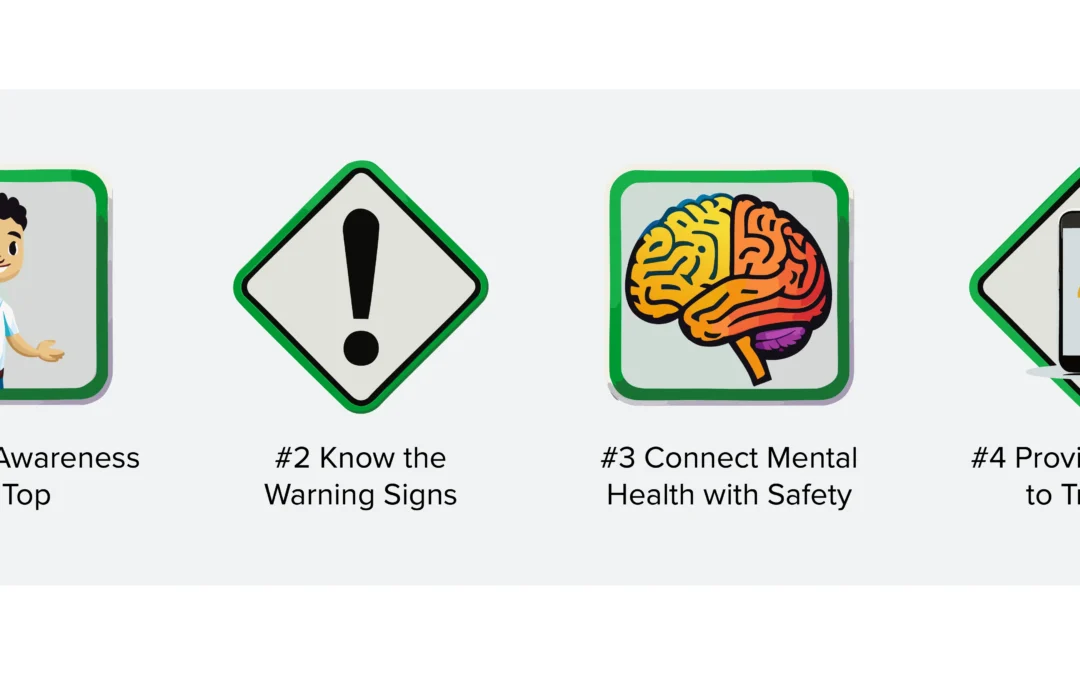Do organizations have a responsibility to their employees when it comes to mental health? Yes! Duty of care legally requires employers to prevent harm to employees in their care (i.e., employment) while they are using the company’s services or exposed to the company’s activities.
Employees who experience positive mental health at work are more likely to stay in their role, take fewer unplanned days off, and be more productive and creative. This means happier customers, greater productivity, and less turnover for employers – ultimately, increased revenue for the company. If an employer is not providing a safe and healthy work environment, no amount of training can improve employees’ well-being. Good mental health starts at the top. For employees to experience a positive change in the workplace, senior leadership must make the change.
May is Mental Health Awareness Month. This May, commit to improving your employees’ mental health in the workplace using four easy strategies.
Four Easy Ways to Boost Mental Health in the Workplace
#1 Improve Awareness at the Top
Like other industries, workers in construction are not always encouraged to talk about mental health or feel empowered to speak up if they need help. The stigma attached to vulnerability makes it difficult for employees to discuss their physical and mental health struggles, especially with their managers. Leadership has great power to address and influence the perception of mental health among its employees. Leaders sharing personal stories that highlight “it’s okay to not be okay,” generates empathy and trust, dispelling shame and fear of judgment.
#2 Know the Warning Signs
Symptoms of poor mental health include decreased productivity, tardiness, increased conflict with team members, risky behaviors, difficulty concentrating, extreme mood swings, excessive use of alcohol and drugs, or isolation from coworkers.
When leadership understands and recognizes the warning signs for common mental health disorders, they can prevent more serious problems or injuries from happening in the future.
#3 Connect Mental Health with Safety
Employers must place as much value on mental health as physical safety – both are equally essential to a productive workforce. Team members should receive mental health benefits as part of their employee benefits package, including training on how to use mental health benefits and counseling services.
#4 Provide Access to Training
Employees may feel more comfortable discussing struggles or challenges with peers rather than managers. Providing employee training in mental health awareness and suicide prevention fights stigma and promotes a healthier, more productive workplace. When employees are trained and armed with “mental first aid kits,” they can more confidently recognize warning signs, intervene and even save lives.
Tyfoom Makes Boosting Mental Health a Snap
Tyfoom’s video-based microlearning platform provides an all-in-one tool to boost mental health in the workplace. With Tyfoom, employers can improve mental health awareness from the top down. The Tyfoom app allows managers to create content playlists based on individual roles, so training can be curated to different leaders including those at the senior or executive levels.
Managers can also use Tyfoom trainings to inform all employees of the warning signs of poor mental health and how to intervene. With dozens of mental health-related training videos (including 60 new videos released in conjunction with Mental Health Awareness Month this May), employees are equipped with mental first aid kits to provide support to those who may be struggling with mental health issues.
Tyfoom connects mental health with safety by providing trainings and resources to employees, reducing shame and promoting a healthier, more productive workplace. To learn more, schedule a meeting to speak with a Tyfoom training consultant.

